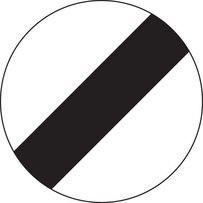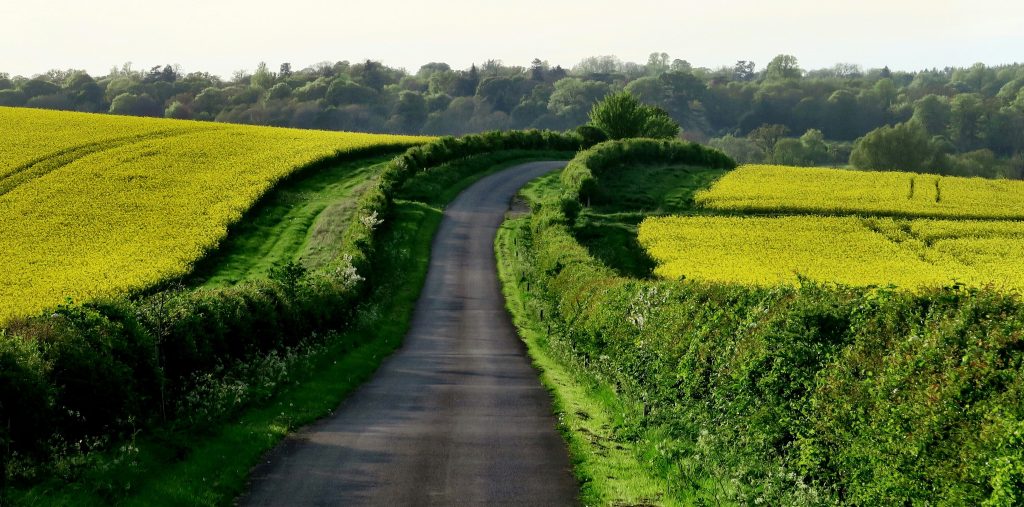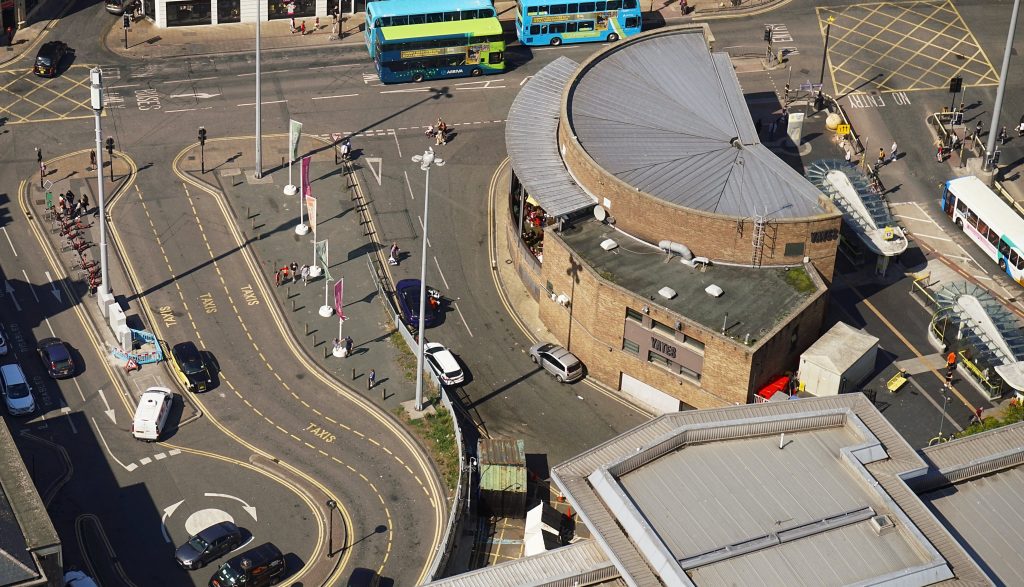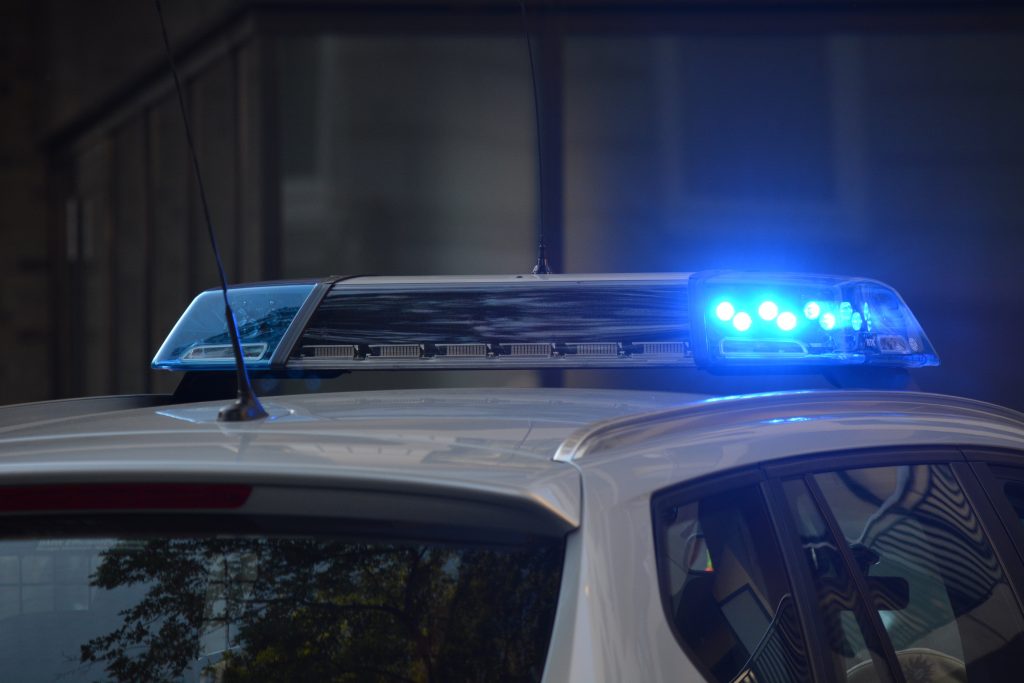You’re driving along and a speed camera looms before you. There hasn’t been a speed limit sign for a while—and suddenly you realise you’re not 100% sure how fast you’re meant to be going. “What’s the speed limit?”, you ask your road trip buddy. “Oh, it’s the national speed limit”, they reply. All fine and dandy… as long as you know what that is.
From studying for your theory test to road tripping around the UK, the national speed limit is one of those need-to-know-at-all-times pieces of driving law. It can also be confusing, especially to new drivers. Not to worry, though: we’ve put together a guide explaining exactly what it means, which specific speeds it’s referring to and how you can tell when it’s in force.
What is the national speed limit in the UK—and when does it apply?
The national speed limit simply means the default maximum speed permitted on any given road.
You’ll be used to seeing signs telling you precisely what the upper speed limit is in miles per hour (mph). But when a national speed limit sign is shown instead, the road defaults to the national speed limit. And where you don’t see any other specific speed limit signs on a road, you should assume that the national speed limit applies.
Easy enough, right? Unfortunately, knowing when the national speed limit is in force is only half the battle. The speed limit itself varies, depending on both the type of road and the category of vehicle you’re driving.
What does the national speed limit sign look like?

All content is used as under the Open Government Licence v3.0
Like other UK speed signs, the national speed limit sign is circular. But because it can mean different speeds on different roads, the sign doesn’t show a specific number. Instead you’ll see a black stripe running diagonally across a white background—bottom left to top right. You might find it as a standalone sign or affixed to a lamppost.
Dual carriageways

The national speed limit in the UK for a car on any dual carriageway in the UK is 70 mph.
Many learners think that dual carriageways are roads with at least 2 lanes for travel in each direction—but that’s not actually the case. In fact, they’re any road that is divided by a central reservation (some kind of physical barrier). Most often you’ll see a grass verge or a metal barrier separating the carriageways, which serve to reduce the risk that a vehicle will end up in a lane facing oncoming traffic. Motorways are one of the most obvious types of dual carriageways, but many major A roads are also included in this category.
You will typically see the national speed limit sign at the start of a dual carriageway—but remember, it only applies until the next speed limit sign you see. The introduction of more and more smart motorways means that speed limits are able to be altered electronically by operators, who respond to factors like traffic flow and accidents. This helps to avoid stop-start traffic, and keeps you moving—albeit at a slower pace. It also means you need to keep your eyes peeled for different speed limits in force on different sections of the road.
Single carriageways

The national speed limit in the UK for cars on single carriageways is 60 mph.
Single carriageways are roads where traffic going in either direction is not separated by a central reservation. In other words, if you were to cross the road as a pedestrian, there would be no physical barrier that you would have to navigate in order to reach the other side.
So, technically, a narrow, winding country lane can be subject to the same speed restrictions as a road with 3 or 4 distinct lanes. And that’s where your judgement comes in. 60 mph is the absolute maximum on single carriageways—and you don’t have to be breaking the speed limit to be driving too fast. You must also be able to remain in control of your vehicle at all times, and anticipate hazards along the way.
Built-Up areas

The lowest national speed limit of all is that which is present within built-up areas: 30 mph. You will typically see a 30 mph sign to indicate this when you enter a city, town or village. In the absence of any speed limit sign, you should (as on all roads) assume that the limit of 30 mph applies within a built-up area.
So why is the speed limit much lower here than on other single carriageway roads? Well, it reflects the fact that built-up areas tend to carry high risks of pedestrians stepping into the road, or opening car doors as you drive past. Streets in built-up areas also tend to be quite narrow—particularly if vehicles are parked on either side. Swerving to avoid a hazard could put you into the path of oncoming traffic, so it’s important that you’re able to stop quickly if you need to. In an emergency situation, it takes 23 metres to reach a standstill when travelling at 30 mph. If you do collide with a pedestrian or vehicle, you dramatically decrease the risk of serious injury by keeping to the national speed limit.
What constitutes a built-up area?
You can usually tell that an area is built-up if it has street lighting. Technically, a road is only a ‘street’ if it has more purpose than getting drivers from A to B, i.e. it’s a specific place. There must be 3 or more street lights in a row, no further than 183m (about 14 seconds at 30 mph) apart.
How is the national speed limit enforced?

Just like with other speed limits, speed cameras are often used to detect motorists who are breaking this law. These can be static cameras (including average speed checks), or operated by a police officer or car. Failure to keep to the national speed limit can result in a fine, points on your licence, or a speed awareness course. If your speed is a factor contributing to a collision, the consequences may be even more serious.
What other factors should be considered?
When any speed limit applies, you need to remember that it is a maximum speed, rather than a target. It is always down to you to use your discretion to travel at a sensible pace.
Here are some things you need to factor in:
– Weather conditions: it’s said that stopping times double when the road is wet, and multiply by 10 when there’s snow or ice on the ground. You should always drive far enough behind another vehicle to allow you to stop quickly and safely if you need to.
– If a minimum speed limit is in force, then it is dangerous (and illegal) to travel below this speed, unless you are prevented from doing so by a build up in traffic, or an accident.
– Can you see round the next bend? If not, how do you know whether there’s a vehicle, pedestrian, cyclist or animal waiting for you to turn the corner? Visibility is key when deciding on your speed.
– You should always react to the speed of the other drivers around you—but don’t be bullied into speeding if you’re being tailgated.
